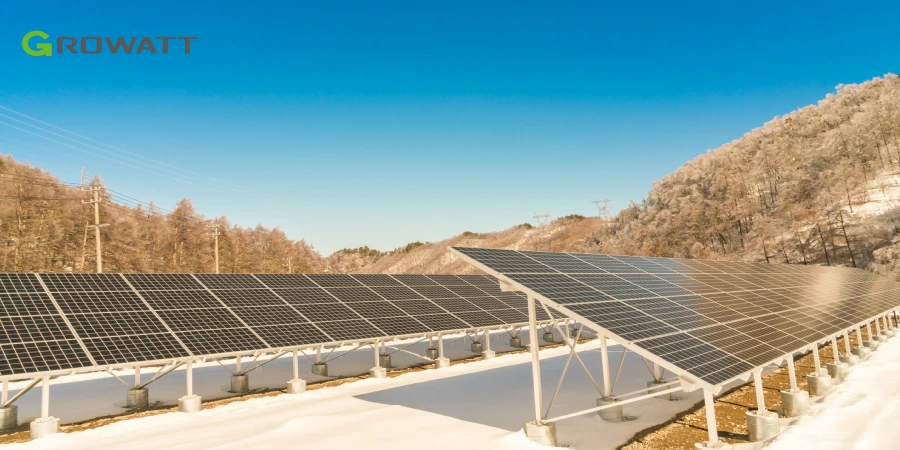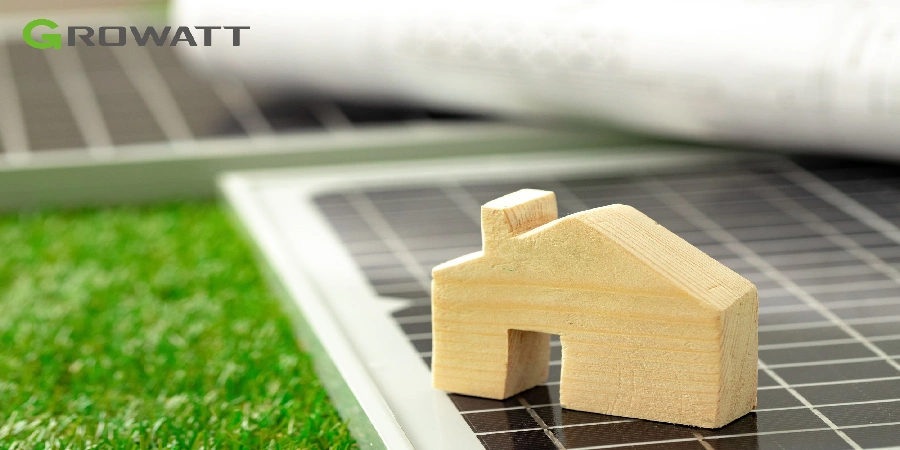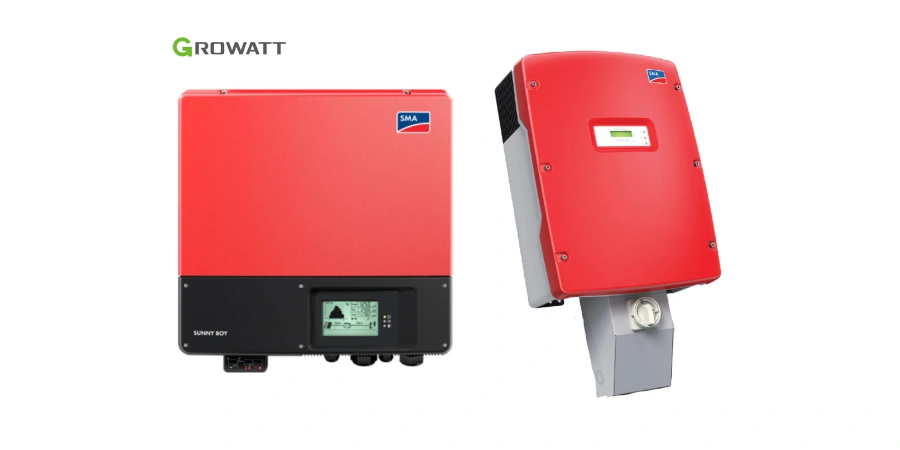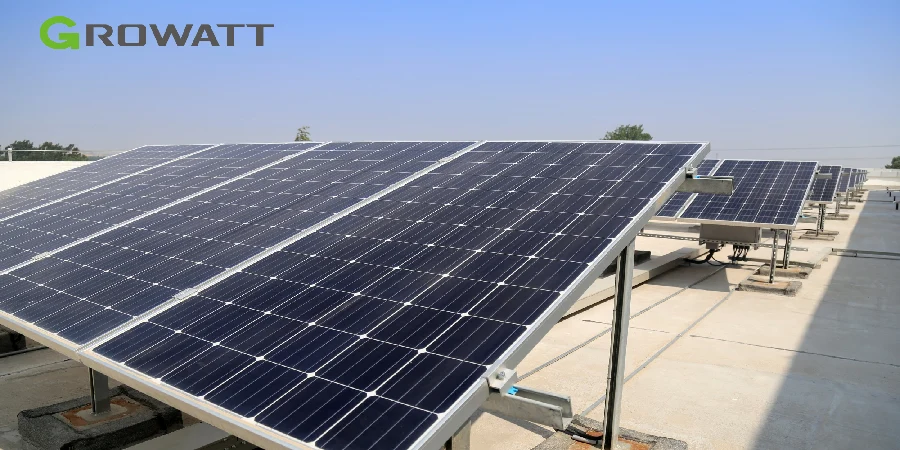There are many solar inverters and solar panels that transform The energy from the sun into electricity, which powers any electrical device. However, you’ll need a solar inverter buying guide to give you more details about it. To get more details about growatt off-grid inverter price call our technicians, they can guide you as well.
Top 5 solar inverter manufacturers in the world
solar inverter dealers provide a selection of micro and household inverters for solar power applications. There are three varieties of inverters for homes: mixed-grid solar power inverters, grid-connected inverters, and off-grid inverters. Micro-inverters can be used directly with solar panels, but house inverters need the usage of home energy storage batteries. A vital electrical device that changes direct current (DC) into alternating current (AC) is a solar inverter. Here is a solar inverter comparison table.
1. Growatt new energy(I Growatt Inverter)
Under David Ding’s leadership, a group of pioneers in the global PV sector founded Growatt in 2011 intending to build a sustainable and green future. Team Growatt is motivated to see everyone gain from sustainable energy, which is why they put forth endless effort to deliver premium products and services to customers throughout the world. Its assortment of products includes:
- Residential PV inverters
- Commercial and industry PV inverters
- Utility-scale PV inverters
- Residential storage inverters
- Off-grid storage inverters
- Battery systems
- Ess accessories
- Portable power station
- AC EV charger
- DC EV charger
2. WHC
Among the top 10 producers of solar inverters worldwide, WHC is the most dependable. The processing factory occupies 200,000 square meters, has been producing solar batteries for 16 years, and off-grid solar systems for 12 years, and has nine patent applications under its belt. Its offerings include:
- Solar energy systems
- Solar lighting systems
- Solar batteries
- Solar controllers
- Solar water pump
- Solar inverters
- Solar panels
- LiFePo4 batteries
3. Sungrow Power Supply Co., Ltd
With more than 269 GW deployed worldwide as of June 2022, Sungrow Power Supply Co., Ltd. is the most bankable of the top 10 solar inverter producers in the world. Sungrow is committed to providing clean power for everyone and is striving to become the world leader in clean power conversion technology. The company offers a comprehensive range of products and services. its selection of goods and services:
- String inverter
- Central inverter
- Turnkey solution
- 1+X modular inverter
- Power conversion
- system/hybrid inverters
- Battery energy storage system
- Floating body
- Inverter & booster floating system
- DC charger
- AC charger
- PV system
4. SMA Solar Technologies AG
Alternating current converters, or solar inverters, are devices made by SMA Solar Technology AG that use solar energy to produce electricity. The business specializes in photovoltaic system technologies. With its global operations, SMA has its headquarters located in Germany. SMA is still a global leader and trendsetter in the transition to 100% renewable energy. its Service and Product Offerings:
- Solar inverters
- Hybrid inverters
- Battery inverters
- System solutions and strategy
- Commercial storage
- DC technology
- E-mobility charging solutions
- Monitoring and control
- Apps and software
5. Power electronics S.L
Manufacturers rely on SL Power Electronics as a global leader in the design and production of AC/DC power conversion systems for their mission-critical applications. They offer a range of turnkey solutions that are conventional, modified, and fully customized. They offer OEMs exceptional performance with solutions developed for thermal management, reliability, EMI/EMC, power density, and power efficiency. They have over 60 years of experience in the power business. Its range of goods and services includes:
- AC-DC power supplies
- Battery charger
- Mechanical form factor
- Power level
- LED lighting
- Single output
- Dual output
- Triple output
- LED drivers
In general, a good solar inverter buying guide can help you to find a suitable solar inverter. It will assist and advise you in selecting the ideal solar inverter for your home use. By checking “I Growatt Inverter” you can find a good growatt solar inverter price list.
Buying guide solar inverters
The most popular kind of inverter used in the UK, Europe, Australia, and Asia is the string solar inverter as below.
• LuxPower Hybrid Inverter LPX 5K ACS.
• Huawei Sun2000 5k.
• SMA Sunny Boy 5.0.
• Growatt MOD10-15KTL3-X.
• Sungrow SG10RS.
• SolaX X1 Hybrid 7.5kW G4 Inverter.
• Solis 5kW Hybrid 5G Inverter.
• LGES-5048 hybrid inverter.
• Enphase IQ8 Microinverters
Huawei Inverters
Huawei Inverters hold the top solar inverter ratings spot with a 38% ranking in all project quotations. Huawei SUN-2000 100KTL and 300KTL are their most commonly used inverters coupled with Smartloggers. Some of them are as below:
• 4/6/9/10 maximum PowerPoint tracking (MPPT) for different layout adaptations
• 8/12/18/20 strings for intelligent monitoring and fast troubleshooting
• With a >0.5% failure rate, upgraded safety is offered.
• AI-powered arc-fault circuit interrupter (AFCI) reduces fire risk proactively.
SolarEdge Home Wave Inverter
Standing out is the SolarEdge Home Wave Inverter, which receives excellent ratings in practically every category.
Among the home inverters we’ve tested, it has the most remarkable efficiency.
Tesla Solar Inverter
Tesla solar inverters are the Well-balanced Choice. The simplest way to characterize Tesla’s solar portfolio, including its inverter, is “balanced.” It has respectable efficiency ratings and app reviews.
SMA Sunny Boy
Some of the most popular solar inverters sold worldwide are the Sunny Boy models, which are a part of SMA’s TL series. They have hight Reliability.
Growatt Hybrid Inverters
The best hybrid inverter we’ve found is growatt inverters for sale and growatt inverter distributor. It comes in several sizes and has a respectable guarantee and efficiency. Interestingly, it costs less than its equivalents, which is surprising because hybrids are often more expensive. The less user-friendly and occasionally broken app is a drawback. This type is among Hybrid Top Performer.to get more information about growatt hybrid inverter price be in touch with us.
Enphase IQ8 Microinverters
This type is Microinverter Leader. In the home microinverter market, Enphase’s IQ8 leads the competition, despite a smaller selection of microinverters than string inverters. Every device has a 25-year warranty and provides exceptional efficiency.
Top Solar Inverters For 2024
After examining the specifications of several popular solar inverters on the market, we will know the Best solar inverter buying guide for your home. our top pick was the SolarEdge Home Wave Inverter and I Growatt inverter with the best growatt inverters for sale. Here is a Solar inverter buying guide.







